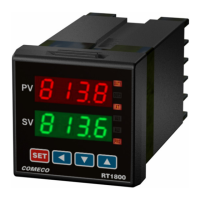24
5.4. Electro-magnetic interference (EMI) issues
If high-energy electric spikes are allowed to get into device circuitry, the microprocessor may be misled
and unpredictable erroneous functioning may result.
Devices that may cause all the types of noise coupling described above, especially when switched on
and off, are: big electromechanical relays, contactors, electrical motors, gas-filled lamps (tubes), welding
equipment, solid state inverters, and light dimmers, and the cables leading to such devices.
As a summary, the cause of interference in most cases above is generally the abrupt current switching.
There are two general approaches to avoiding electromagnetic interference:
- to suppress noise at the source - this is the best approach but is applicable only to major noise sources;
- to protect your device and especially the signal and power lines connected to it from unwelcome EMI.
5.4.1. Protecting the cables leading to your device
- Use cables in compliance with the particular device application.
- Never lay signal wires close in parallel with power supply or actuator wires. If this happens you will never
get a steady measurement. Leave 10...15 cm between long parallel signal and power cables.
- Only similar signals may be run close together. Package input signal wires into twisted couples and shield.
- Arrange power and signal cables crossing at right angle and at the maximum possible distance.
- Signal cable branching and terminals are susceptible to noise and should be arranged away from noise sources.
- Connect reliably the ground at measurement point and controller ground with thick stranded wire.
- All shields must be reliably grounded at one end, preferably at your device end. An ungrounded shield
may be worse than no shield at all.
5.4.2. Supply circuit recommendations
The AC supply voltage and frequency must be kept within the stated limits. Use stabilizer if necessary.
Avoid sharing supply lines with powerful consumers, especially inductive loads switched on and off (e.g.
motors, lighting, etc.). To provide current supply for your device and at the same time stop unwelcome
interference signals, use shielded 1:1 isolation transformer (there are special designs of anti-interference
transformers). A high quality anti-interference filter may also prove useful.
5.4.3. Suppressing major noise sources
Major noise sources are usually inductive loads switched on and off (motors, solenoids, relays, etc).
A voltage-surge suppressor should be connected in parallel with the inductance or, if this is not possible,
in parallel with the switching contacts. A metal-oxide varistor (MOV) and RC network should be used.
Inductive loads
To suppress high-voltage spikes, connect a metal-oxide varistor (MOV) in parallel with and as closer
as possible to the inductance. An RC network in parallel with the varistor is highly recommended.
It should constitute of a wire-wound or carbon resistor in series with a X/Y-type AC high-voltage capacitor.
Select resistor power in relation to the inductance voltage. Keep RC network leads as short as possible.
Contacts
When a contact opens and breaks inductive load circuit, a certain amount of energy stored in the inductance
has to be released. If there is no varistor or RC network to dissipate it, the voltage rises abruptly and an electric arc
is formed between opening contacts. This causes both electromagnetic interference and contact life shortening.
To 'quieten' the arc, connect an RC network in parallel with the contact. To provide extra circuit protection in
cases of voltages higher than 200 V, add MOV in parallel. Please note that at 230 V, 50 Hz supply, up to 7 mA
current may flow through the network. A varistor may be added, but the RC network should already be present.
Direct current (DC) circuits
In parallel with the inductive load, connect a network consisting of a diode in series with a resistor.
Mind that the resistance should be less than that of the inductive load.
6. SERIAL INTERFACE
If serial interface is installed, follow the additional requirements given in the supplemental
COMMUNICATION MANUAL (CD or printed version) or download it from http://www.comeco.org/downloads
.

